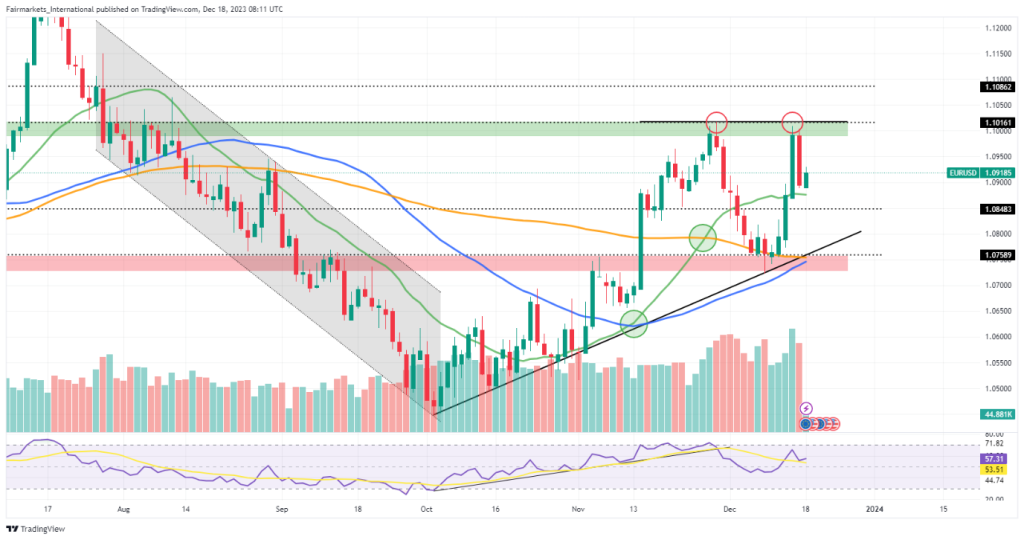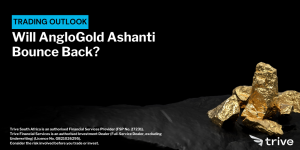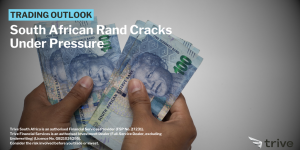
The euro (EUR) is hovering slightly above 1.09 against the US dollar (USD) on Monday as investors grapple with mixed signals from central banks and await key inflation data from the US later this week. The European Central Bank (ECB) maintained its hawkish stance last week, pushing back against expectations of imminent rate cuts despite a weakening eurozone economy. However, dovish comments from individual ECB members, coupled with the Federal Reserve’s recent hints at potential rate cuts next year, are keeping the euro afloat.
The Bank of Japan (BOJ) is also in focus this week, with its two-day policy meeting kicking off today. While analysts don’t expect a definitive shift away from negative rates at this meeting, any hints of future tightening could provide a challenge to the euro’s current bullish run.
On the data front, investors are eagerly awaiting the US core personal consumption expenditure (PCE) index, the Fed’s preferred inflation gauge, due for release on Friday. A lower-than-expected reading could further fuel speculation of early rate cuts by the Fed, potentially strengthening the euro against the dollar.
Technical Analysis:
The EURUSD is currently trading above its key moving averages, indicating underlying bullish momentum. The recent break of the 20-SMA (green line) above both the 50-SMA (blue line) and 100-SMA (orange line) further confirms the positive trend.
However, the RSI, while not in overbought territory, suggests a potential for a pullback. The price action could find short-term support at the 1.08483 level if the 20-SMA currently resides. A break below this level could trigger further selling, potentially bringing the 1.07589 support level into play.
On the upside, the initial resistance lies at 1.10161. A sustained push above this level could pave the way for further gains towards 1.10862 in the near term.

Summary:
The EURUSD faces a crucial week ahead, with the BOJ meeting and the US inflation data likely to set the direction for the pair. While the potential for a dovish shift from the BOJ and a weak US inflation reading could boost the euro, the divergence in central bank policies and the risk of a hawkish surprise from the BOJ remain potential headwinds.
Sources: TradingView, Trading Economics, Reuters, Dow Jones Newswire, MT Newswire.
Piece written by Mfanafuthi Mhlongo, Trive Financial Market Analyst
Disclaimer: Trive South Africa (Pty) Ltd, Registration number 2005/011130/07, and an Authorised Financial Services Provider in terms of the Financial Advisory and Intermediary Services Act 2002 (FSP No. 27231). Any analysis/data/opinion contained herein are for informational purposes only and should not be considered advice or a recommendation to invest in any security. The content herein was created using proprietary strategies based on parameters that may include price, time, economic events, liquidity, risk, and macro and cyclical analysis. Securities involve a degree of risk and are volatile instruments. Market and economic conditions are subject to sudden change, which may have a material impact on the outcome of financial instruments and may not be suitable for all investors. When trading or investing in securities or alternative products, the value of the product can increase or decrease meaning your investment can increase or decrease in value. Past performance is not an indication of future performance. Trive South Africa (Pty) Ltd, and its employees assume no liability for any loss or damage (direct, indirect, consequential, or inconsequential) that may be suffered from using or relying on the information contained herein. Please consider the risks involved before you trade or invest.




